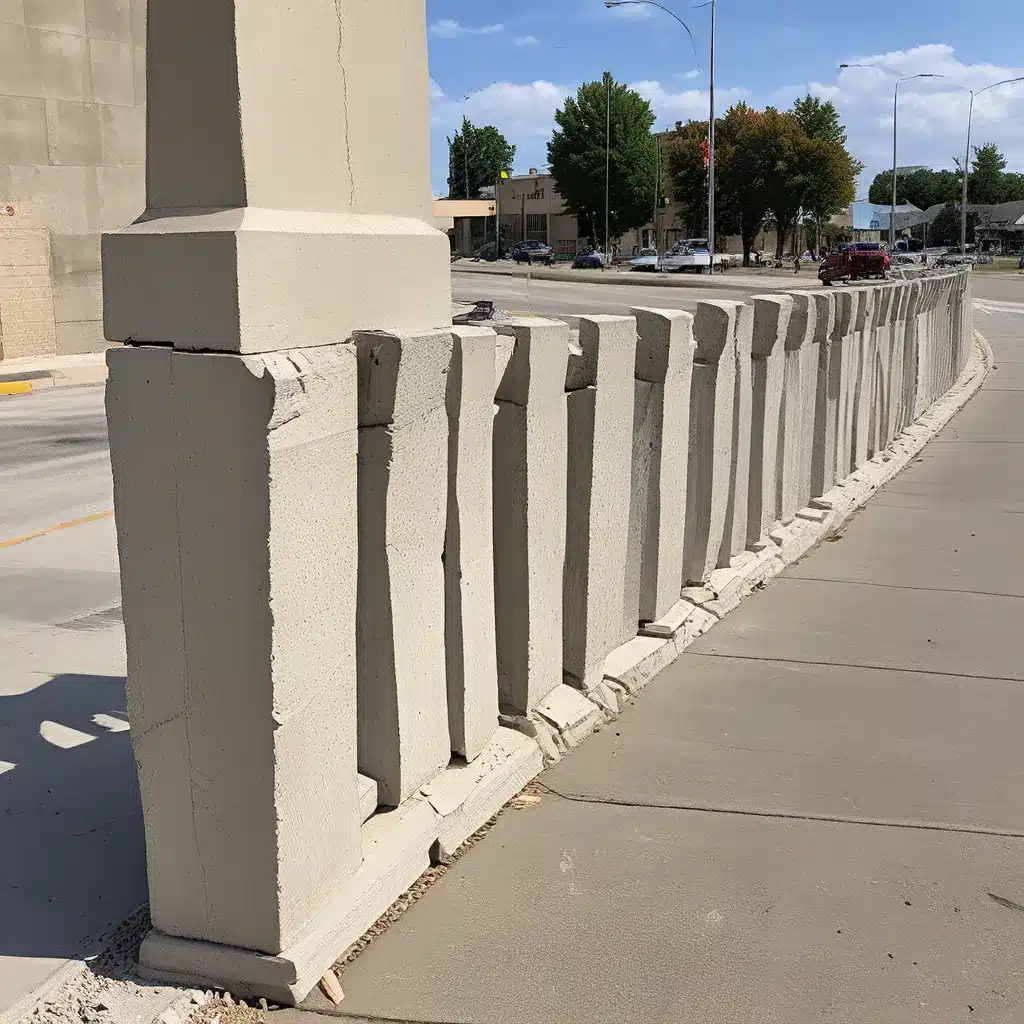
Understanding the Risks of Concrete Buckling
Concrete is a durable and versatile construction material used extensively in both residential and commercial projects throughout Kansas City. However, even the most well-designed and installed concrete structures can be susceptible to a phenomenon known as concrete buckling. This issue can pose significant structural safety risks if left unaddressed, making it crucial for Kansas City property owners and contractors to understand the causes, prevention, and remediation strategies.
Concrete buckling occurs when the concrete slab or foundation experiences uneven expansion and contraction, often due to changes in temperature, moisture, or soil conditions. This can lead to the concrete “buckling” or deforming, creating raised or uneven surfaces that can pose trip hazards and compromise the structural integrity of the building.
According to the U.S. Consumer Product Safety Commission (CPSC), concrete buckling is a common problem that can result in serious injuries, such as falls and impact-related trauma. Additionally, the Occupational Safety and Health Administration (OSHA) has identified concrete buckling as a significant workplace safety concern, particularly in construction and maintenance operations.
Causes of Concrete Buckling in Kansas City
There are several factors that can contribute to concrete buckling in the Kansas City region, including:
-
Temperature Fluctuations: The Midwest, including Kansas City, experiences significant seasonal temperature changes, with hot summers and cold winters. These extreme temperature swings can cause the concrete to expand and contract, leading to uneven deformation.
-
Soil Conditions: Kansas City’s soil characteristics, such as clay-based soils or poor drainage, can lead to soil movement and settlement, which in turn can cause the concrete to buckle and crack.
-
Improper Installation: If the concrete is not properly reinforced, cured, or installed on a stable foundation, it becomes more susceptible to buckling and deformation over time.
-
Moisture Exposure: Water infiltration, poor drainage, or other sources of excess moisture can cause the concrete to swell and buckle, particularly in areas with high groundwater levels.
-
Aging and Wear: Even well-installed concrete can experience deterioration and buckling over time due to the cumulative effects of weather, use, and other environmental factors.
Understanding these common causes is essential for Kansas City property owners and contractors to develop effective strategies for preventing and addressing concrete buckling.
Preventing Concrete Buckling in Kansas City
To mitigate the risks of concrete buckling in Kansas City, it’s essential to take a proactive approach to concrete installation, maintenance, and repair. Here are some key strategies:
Proper Site Preparation and Concrete Placement
Ensuring a stable and level foundation is critical for preventing concrete buckling. This includes proper soil compaction, grading, and the use of reinforced concrete slabs or footings to provide a solid base. Additionally, concrete should be poured and cured according to industry best practices to minimize the risk of uneven expansion and contraction.
Expansion and Contraction Joints
Incorporating strategically placed expansion and contraction joints in the concrete design can help accommodate the natural movements caused by temperature and moisture fluctuations. These joints allow the concrete to expand and contract without becoming deformed or cracked.
Proper Drainage and Waterproofing
Effective drainage systems and waterproofing measures around the concrete can help mitigate the effects of excess moisture, which can lead to buckling. This may include installing drainage pipes, ensuring proper grading and slope, and using water-resistant sealants or coatings.
Regular Maintenance and Inspection
Routine inspections and maintenance of concrete surfaces can help identify and address any early signs of buckling or deformation before they become more severe. This may include filling cracks, leveling uneven surfaces, and addressing any underlying issues that may be causing the concrete to buckle.
Professional Concrete Services
For both residential and commercial properties, it’s often advisable to work with a reputable concrete contractor in Kansas City who can provide expert guidance and services, from the initial design and installation to ongoing maintenance and repair. These professionals can help ensure that your concrete structures are built to last and minimize the risks of buckling and other structural issues.
Addressing Concrete Buckling in Kansas City
If concrete buckling does occur, it’s important to address the issue promptly to maintain the safety and structural integrity of the property. Some common remediation strategies include:
-
Concrete Grinding and Leveling: In cases of minor buckling, the affected concrete surfaces can be ground down and leveled to create a smooth, even surface.
-
Slab Jacking or Mudjacking: This process involves injecting a specialized grout mixture under the concrete slab to lift and level the affected areas.
-
Partial or Full Replacement: For more severe cases of concrete buckling, it may be necessary to remove and replace the damaged sections of concrete, ensuring a proper installation and foundation.
-
Structural Reinforcement: In some instances, additional structural support may be required, such as the installation of steel reinforcements or the use of specialized concrete mixes to enhance the concrete’s strength and durability.
Addressing concrete buckling in a timely and effective manner is crucial for maintaining the safety and integrity of your Kansas City property. By working with experienced concrete contractors, you can ensure that any issues are properly diagnosed and remedied, protecting your investment and providing a safe, functional environment for years to come.
Conclusion
Concrete buckling is a common issue in Kansas City, but with the right preventative measures and remediation strategies, property owners can effectively mitigate the structural safety risks. By understanding the causes of concrete buckling, implementing best practices for installation and maintenance, and partnering with reputable concrete contractors, Kansas City residents can enjoy the long-term benefits of durable, well-maintained concrete structures. Remember, proactive concrete care is the key to preserving the safety and value of your property in the Kansas City area.

